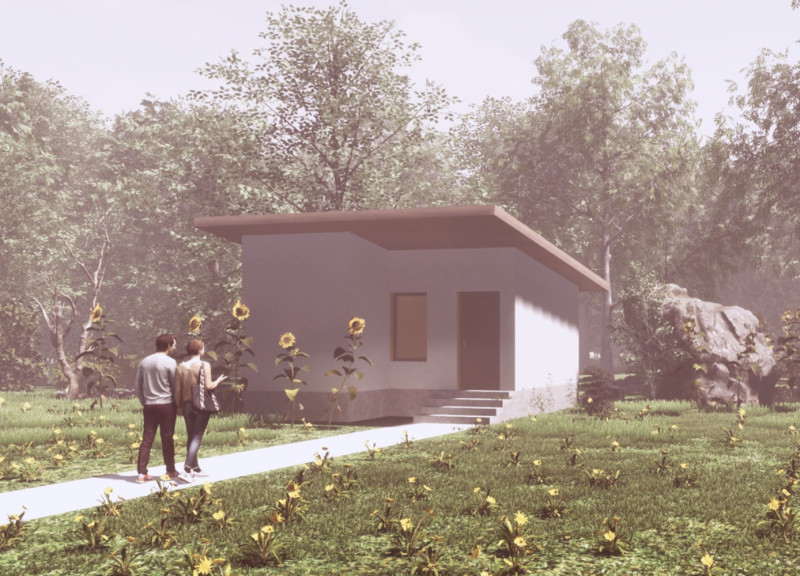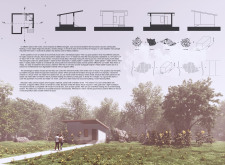5 key facts about this project
The design focuses on addressing urgent global issues related to housing and sustainability. Set in an area vulnerable to natural disasters, the aim is to create homes that not only provide shelter but also have minimal impact on the environment. The concept centers around the use of adobe, a traditional building material known for its ecological advantages. This approach combines time-tested construction methods with the needs of modern housing.
Material Composition
The project specifies a precise mixture for adobe construction, which consists of 0.2 m³ of loam, 0.4 m³ of sand, 0.4 m³ of silt, and 15 sacks of straw for each cubic meter. These materials have been selected for their sustainability and effective thermal properties. Adobe serves as a reliable solution suited to a range of climates while also ensuring structural strength.
Wall Layering
The design features a careful layering of walls to provide both durability and comfort. This includes adobe plaster, a rabbit net made from reed, adobe bricks, and outer layers of plaster. Such layering effectively manages humidity and promotes airflow within the living spaces, which helps to prevent mold and improve indoor air quality.
Thermal and Acoustic Properties
Adobe’s natural density helps maintain a stable indoor temperature throughout the seasons. This quality protects against both heat and cold, helping residents remain comfortable year-round. In addition, the material’s ability to reduce sound transmission contributes to a peaceful living environment, where noise from the outside is kept to a minimum.
Integration of Modern Systems
The design allows for the integration of renewable energy sources, like solar panels, in line with sustainable living goals. The recyclability of adobe supports environmental responsibility, enabling the reuse of materials without adding to long-term waste.
To guard against moisture damage, features like wide gutters and elevated foundations are included. These details enhance the structure's durability while ensuring that it remains solid and cared for over time.
Natural materials and smart design choices create a living space that encourages community while allowing privacy. The layout is both functional and resilient, adapting to the varying needs of its occupants. Large windows provide plenty of natural light, creating an open feel inside and connecting the home with its surroundings while keeping energy use low.



















































